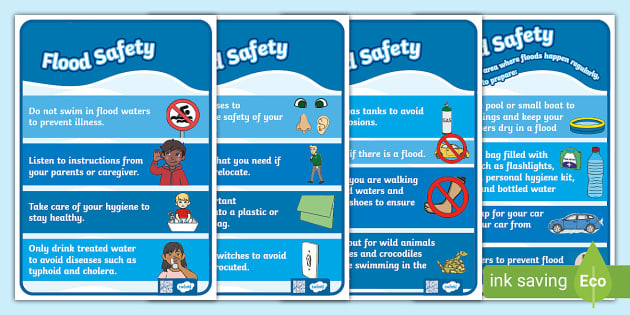NWS Flood Safety: What To Do During A Flood Warning

Table of Contents
Understanding Flood Warnings from the NWS
Knowing the difference between NWS flood alerts is the first step in effective flood preparedness. The NWS uses a system of alerts to communicate the severity and imminence of flooding:
-
Flood Watch: A flood watch means that conditions are favorable for flooding. Flooding is possible. This is your time to prepare. Review your evacuation plan, gather essential documents, and monitor weather updates closely.
-
Flood Warning: A flood warning is far more serious. This means that flooding is occurring or is imminent. Take action immediately. Evacuation may be necessary.
-
Flood Advisory: A flood advisory indicates that minor flooding is occurring or is imminent. While less severe than a warning, it still requires awareness and vigilance. Be cautious and monitor the situation closely.
Receiving timely NWS flood warnings is critical. You can receive alerts through several channels:
- NOAA Weather Radio: A dedicated weather radio is an excellent way to receive continuous updates, even during power outages.
- Weather Apps: Numerous weather apps provide real-time alerts, including flood warnings, directly to your smartphone. Ensure your location is accurately set within the app.
- NWS Website: The official NWS website provides detailed forecasts and warnings for your specific area.
Evacuation Procedures During a Flood Warning
Heeding evacuation orders is paramount during a flood warning. Ignoring these orders can put your life at serious risk. A well-practiced evacuation plan is essential for flood safety:
- Know Your Evacuation Route: Identify multiple escape routes from your home and community in advance, considering potential road closures.
- Pack Essential Items: Prepare a "go-bag" with important documents (insurance, identification), medications, essential clothing, and other necessities. Don't forget pet supplies if applicable.
- Turn Off Utilities: Before leaving, turn off electricity, gas, and water to prevent further damage and hazards.
- Follow Instructions from Emergency Personnel: Obey the instructions given by local authorities and emergency responders. Their guidance is designed to keep you safe.
Attempting to drive through floodwaters is extremely dangerous. Just a few inches of water can sweep a vehicle off the road. Turn around, don't drown!
Safety Measures During a Flood
If evacuation is not possible, take immediate steps to protect yourself and your property. Remember, your safety is the top priority:
- Move Valuables to Upper Floors: Relocate important documents, electronics, and other valuables to higher levels of your home.
- Unplug Electrical Appliances: Turn off and unplug all electrical appliances to prevent electrical hazards from floodwaters.
- Stay Informed: Continuously monitor updates from the NWS and local authorities to assess the situation and any changing instructions.
- Avoid Contact with Floodwaters: Floodwaters are extremely dangerous. They can contain sewage, chemicals, and debris, leading to illness or injury. Never wade through floodwaters.
- Monitor Rising Water Levels: Keep a close eye on rising water levels and be prepared to move to a higher level if necessary.
Floodwaters pose significant dangers, including electrical hazards from downed power lines and contaminated water containing harmful bacteria and pollutants.
Post-Flood Safety
Once the floodwaters recede, the dangers aren't over. Returning to your home after a flood requires caution:
- Avoid Floodwaters: Even after receding, floodwaters often remain contaminated and pose health risks.
- Use Caution When Entering a Flooded Home: Structural damage may have occurred, creating hazards. Check for gas leaks and electrical hazards before entering.
- Contact Your Insurance Company: Report the flood damage to your insurance company as soon as possible to initiate the claims process.
- Contact Local Authorities: Local authorities can provide assistance with cleanup and recovery efforts.
Heavily contaminated areas may require professional cleanup services to remove hazardous materials and prevent health risks. Do not attempt extensive cleanup yourself without proper training and protective gear.
Conclusion
Staying safe during an NWS flood warning requires preparedness and decisive action. Understanding the different alert levels, following evacuation orders, and taking appropriate safety measures can significantly reduce the risk to life and property. Developing a comprehensive NWS flood safety plan, including evacuation routes and emergency contact information, is crucial.
Stay informed about flood warnings in your area by monitoring the National Weather Service (NWS) and developing a comprehensive NWS flood safety plan for your family and home. Being prepared for a flood warning can save lives. Don’t wait; prepare for NWS flood safety today!

Featured Posts
-
 Woody Allen Sexual Abuse Allegations Reignited Sean Penns Backing Sparks Debate
May 25, 2025
Woody Allen Sexual Abuse Allegations Reignited Sean Penns Backing Sparks Debate
May 25, 2025 -
 Monday Night Viewing 10 Must See Tv Shows And Streaming Picks
May 25, 2025
Monday Night Viewing 10 Must See Tv Shows And Streaming Picks
May 25, 2025 -
 Ohnotheydidnts Hunger Games Coverage A Live Journal Retrospective
May 25, 2025
Ohnotheydidnts Hunger Games Coverage A Live Journal Retrospective
May 25, 2025 -
 Famous Falls From Grace 17 Celebrities Who Lost Everything
May 25, 2025
Famous Falls From Grace 17 Celebrities Who Lost Everything
May 25, 2025 -
 Michael Schumacher And His Rivals Fact Vs Fiction
May 25, 2025
Michael Schumacher And His Rivals Fact Vs Fiction
May 25, 2025
